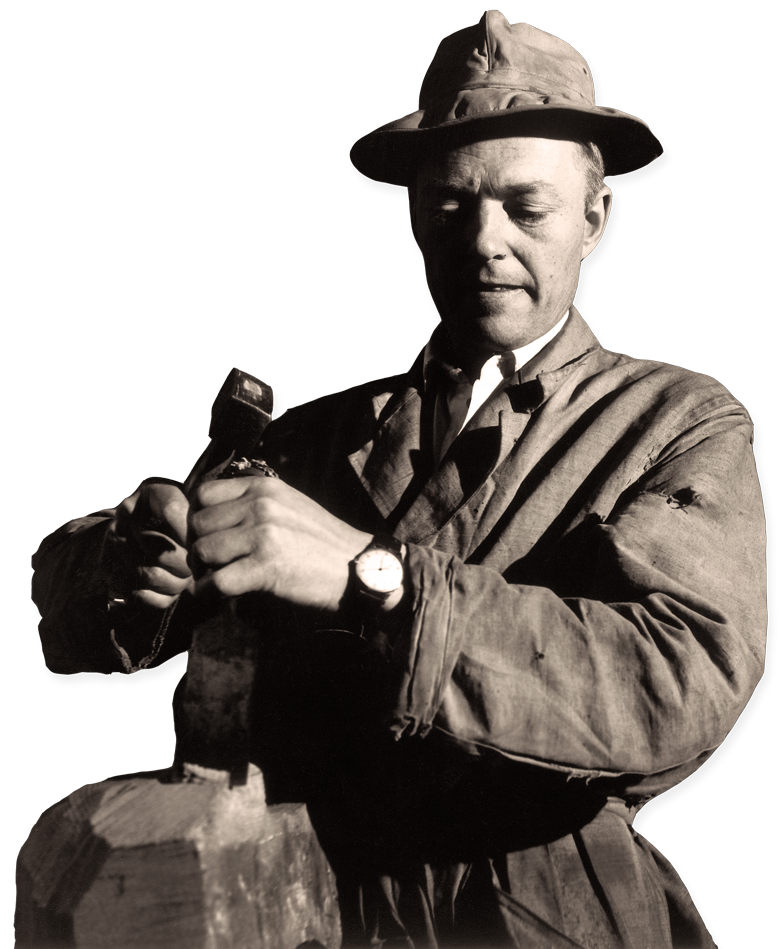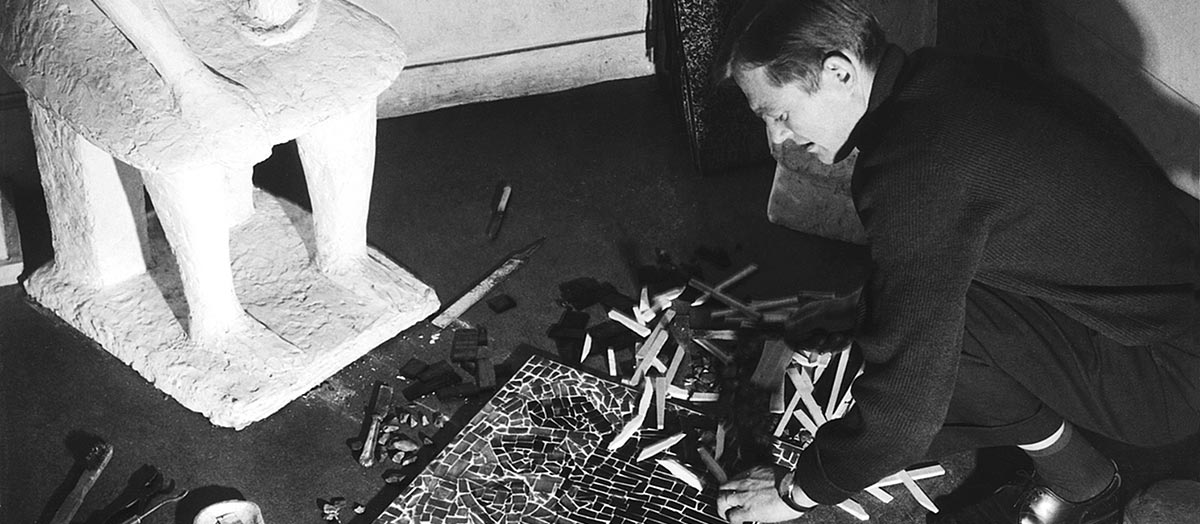Biography of Antanas Mončys
Antanas Mončys (1921-1993)
In 1991, the diaspora artist Antanas Mončys (1921-1993) donated the first collection of his works to the city of Palanga: “I finally made a list of my works, which I donate to Lithuania. It is a part of my life that I am happy to give to Her, because I belong to Her,” he wrote in a letter to then the Minister of Culture and Education Darius Kuolis. Donated sculptures from Germany and France began to move to their homeland in 1992, a second consignment of works arrived after a year. Later the collection was constantly filled with new works, archives, books, personal belongings, organised Mončys' works exhibitions, monographs, detailed exhibition and exposition catalogs, documentary movies. Opened in 1999, the Antanas Mončys House-Museum preserves and popularizes most of the sculptor's legacy, while other works are scattered throughout Germany, Italy, France, Great Britain, Belgium, Algeria and the USA.
Born in Mončiai village (Kretinga district), the artist left Lithuania during the war and lived in the art capital Paris until his death. The artistic environment influenced, taught, in many cases - inspired, pushed him towards post-war modern plastic. His wood and metal sculptures and drawings made him famous in the art world, attracted the attention of collectors. "Paris has polished me," the sculptor wrote about the importance of local art. He was restless, motivated, curious: he carved a tree, a stone, cast lead, made collages and jewelry, modelled clay, painted, made iron fireplaces and furniture, laid a mosaic, installed stained glass, lamps, signs, designed tombstones, even decorated Easter eggs and never stopped drawing. His work spread in Paris like a flower bud thirsty for the sun: he wanted to try everything, there was no such area that he would enter and not find something original, his hands brought life into the smallest piece of stone, wood, or bone. However, while living and creating in a large international art workshop, Mončys never forgot his native roots and language, the simplicity brought from his native lands, his affinity to a tree, his ability to say "a lot" in a simple phrase. Such was his speech: calmly floating, soft, but saturated with wisdom and precision. He always had the Passport of Independent Lithuania in his pocket and Lithuanian songs and fairy tales on his lips. But at the same time he knew how to open up and accept the experience of the artistic environment, infuse French playful elegance, jokes, restored chimera faces into sculptures, collages, whistles and drawings, leave a surreal memorable figure on a sheet of paper with an effortless movement of a hand. For Mončys, drawing was like a daily prayer: "I'll make a sculpture or not - I'll draw.”
The exposition of the museum is designed to reveal the versatile works of the talented Samogitian, to bring the visitor to the multi-membered wooden "chains", to stop the viewer’s gaze at the impressive openwork, standing or hanging sculptures, to show the compositions of collages, paintings, watercolors and drawings filled with ingenuity and play, introduce unique collections of whistles and masks. The meeting with the author is enriched by entries of his diary, a desk with artist's objects and work tools, publications about the author, hand-drawn and written exhibition posters. The exposition was created by architect Valdas Ozarinskas (1961-2014).
Mončys' work is the one of the most striking example of sculpture of the Lithuanian diaspora. He recalls the fate of the creator, who is in the whirlpool of life, and the importance of his artistic origins, the position of the artist: “what I do has its roots in Lithuanian soils. I continued to do what our ancestors did consciously and unconsciously. I think that other cultures have enriched me ", - an entry from the artist's manuscripts (about 1985).
Viktoras Liutkus 2020 m. November
Some facts in short
A. Mončys was born in the village of Mončiai (Kretinga region) in 1921.
In 1941 he graduated from Franciscan gymnasium.
In 1941-1943 he studied architecture in Vytautas Magnus University in Kaunas.
In 1944 he retreated to the West with the approach of the Red Army.
In 1947–1950 he studied sculpture in the art school of Freiburg, after completion of which he was awarded a diploma and a scholarship of the French authorities to continue his studies. He further studied in Paris where he attended a famous Osip Zadkin’s studio. Here he got interested in the vanguard art, in 1952 he started taking part in exhibitions. His works were shown in Germany, France, Italy, USA, Australia, they decorate a number of museums of Western European countries and private collections.
In Lithuania A. Mončys’ works were shown in 1988 for the first time during the exhibition of emigrant artists in Vilnius and Kaunas.
In 1944 he retreated to the West with the approach of the Red Army.
In 1947–1950 he studied sculpture in the art school of Freiburg, after completion of which he was awarded a diploma and a scholarship of the French authorities to continue his studies. He further studied in Paris where he attended a famous Osip Zadkin’s studio. Here he got interested in the vanguard art, in 1952 he started taking part in exhibitions. His works were shown in Germany, France, Italy, USA, Australia, they decorate a number of museums of Western European countries and private collections.
In Lithuania A. Mončys’ works were shown in 1988 for the first time during the exhibition of emigrant artists in Vilnius and Kaunas.

